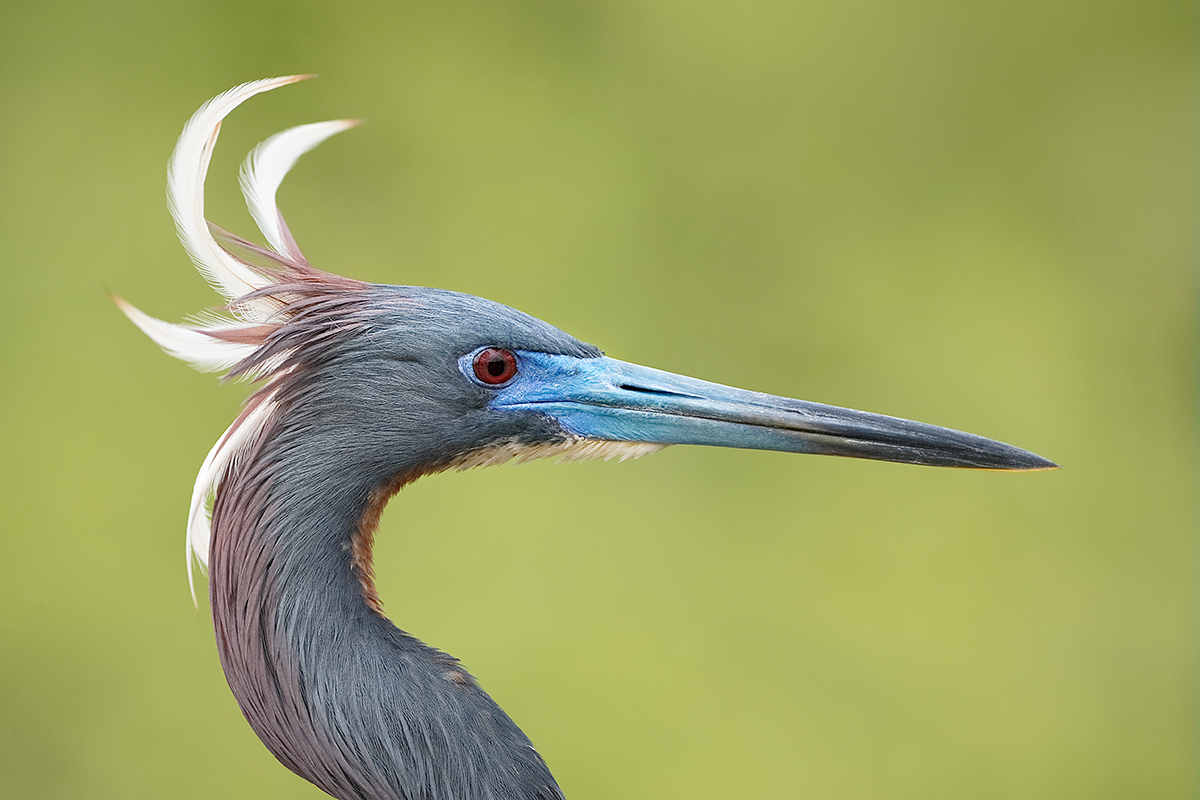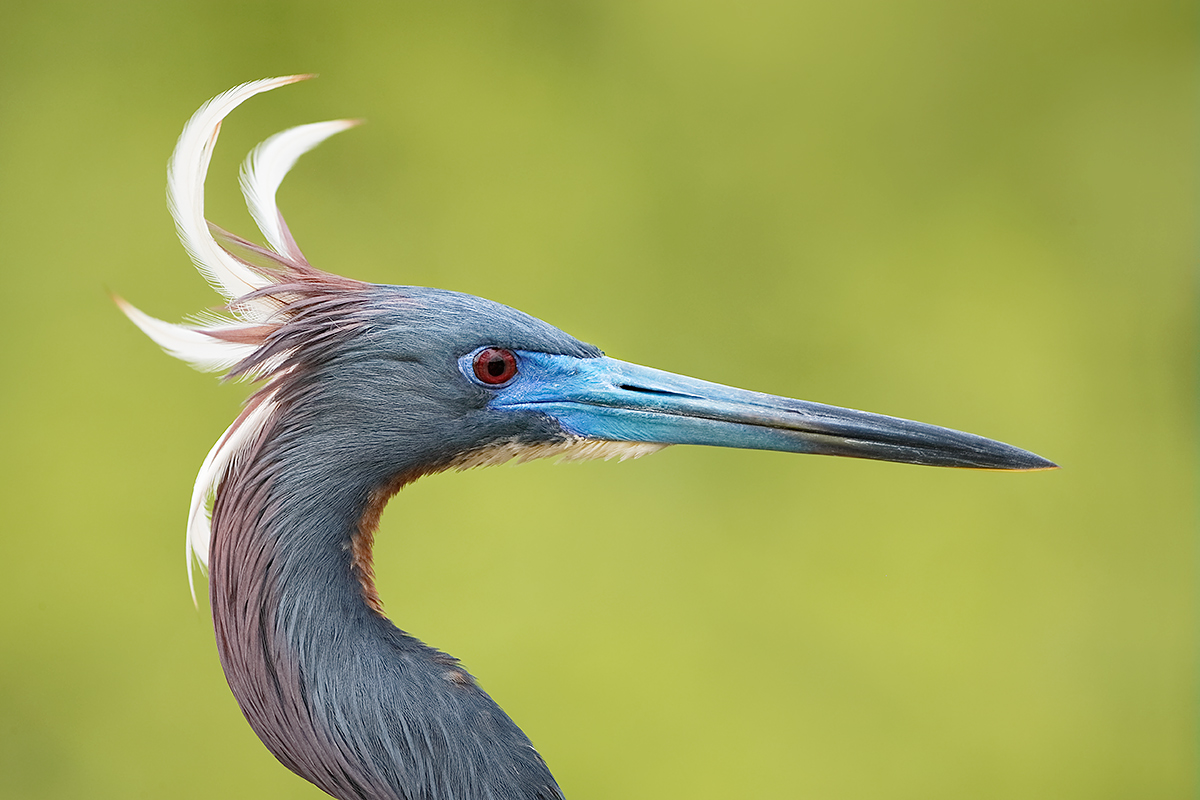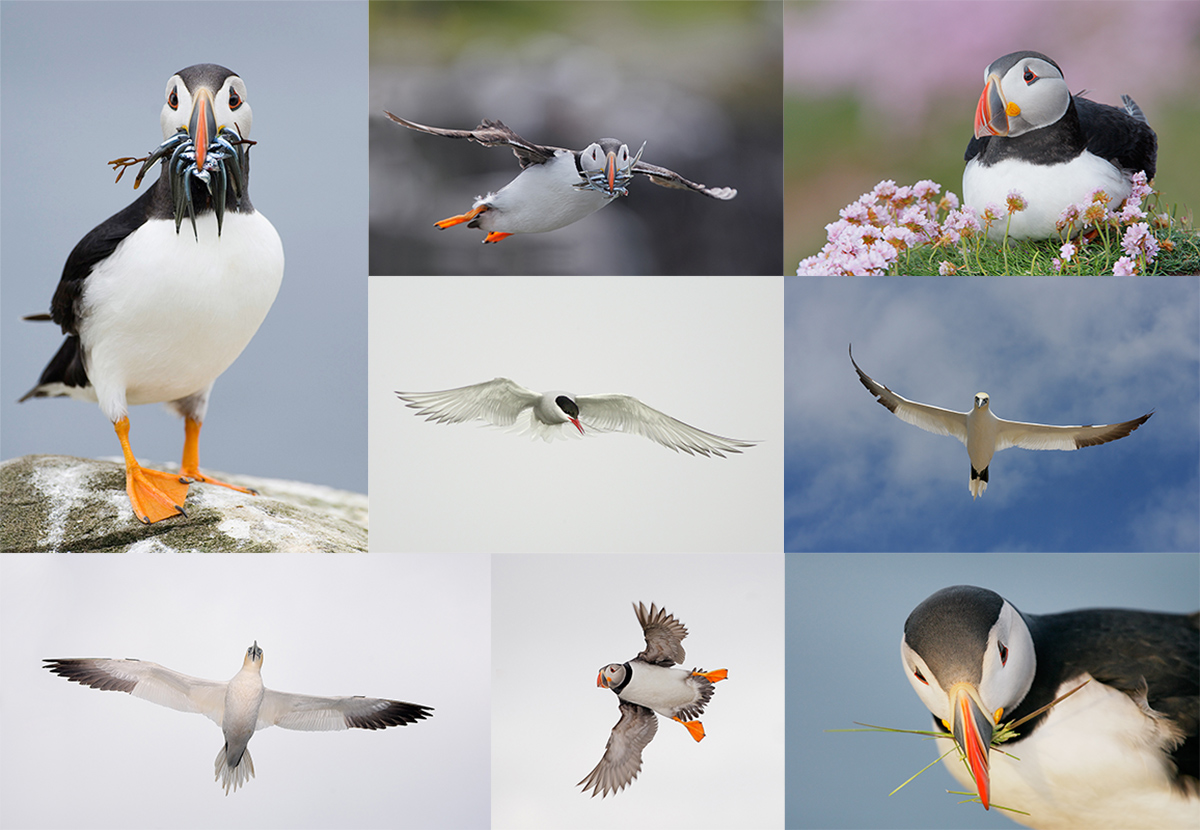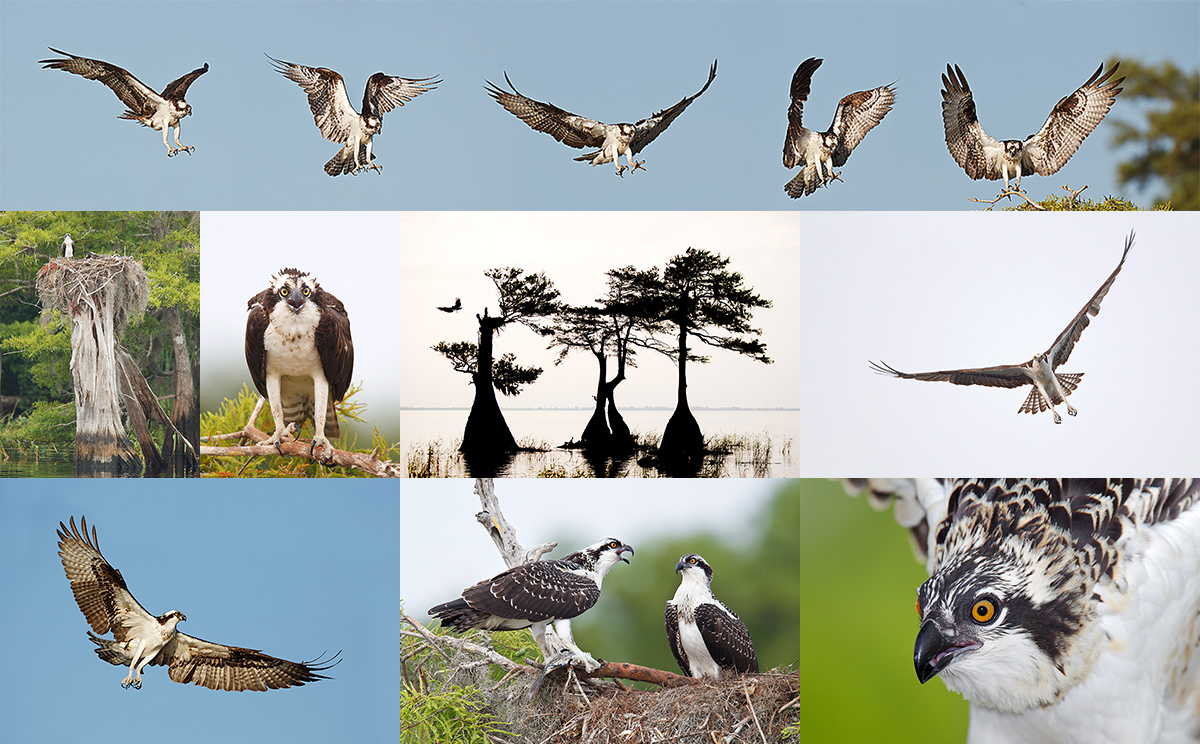Yesterday at Gatorland
I woke early and drove to Gatorland in a light drizzle. I entered at 7:30 just as the rain quit. Conditions stay dry until about 1pm despite the darkening skies. I headed for Ruby Tuesday’s for the salad bar and an electrical outlet; they save that booth for me every Saturday and just, and I mean just beat the storm. As I ate, the view from my table was Armageddon-like as the storm–there were tornado warnings for Kissimmee–roared through. The ride home was not too bad until I headed east on SR 60 into another strong cell.
The Streak Goes On
This post marks 121 straight days with a new educational blog post. With so many folks getting in the habit of using our B&H and Amazon links why quit now? To show your appreciation for my efforts here, we do ask that you use our the B&H and Amazon affiliate links on the right side of the blog for all of your purchases. Please check the availability of all photographic accessories in the BIRDS AS ART Online Store. We sell only what I use and depend on. We will not sell you junk. We know what you need to make creating great images easy and fun. And we are always glad to answer your gear questions via e-mail.
You can find the following items in the store: Gitzo tripods, Mongoose M3.6 and Wimberley heads, plates, low feet, and accessories, flash brackets, , Delkin e-film Pro Compact Flash Cards, LensCoat products, and our unique line-up of educational materials including ABP I & II, Digital Basics, Site and Set-up e-Guides, Canon and Nikon Camera Users and AF e-Guides, and MP-4 Photoshop video tutorials among others.
I would of course appreciate your using our B&H affiliate links for all of your major gear, video, and electronic purchases. For the photographic stuff mentioned in the paragraph above we, meaning BAA, would of course greatly appreciate your business. Here is a huge thank you to the many who have been using our links on a regular basis and visiting the BAA Online store as well.
This blog post took 3 hours to assemble. Enjoy!
|
This Tricolored Heron head portrait was created yesterday at Gatorland at 11:35am on a cloudy day with the Canon EF 200-400mm f/4L IS USM Lens with Internal 1.4x Extender (hand held with the internal extender in place at 436mm) and the Canon EOS-1D X. ISO 800. Evaluative metering +1/3 stop as framed: 1/640 sec. at f/6.3 in Manual mode. AWB. Two sensors to the left of the central sensor/AI Servo-Expand/Rear Focus AF just below and slightly behind the bird’s eye active at the moment of exposure. Click here to see the latest version of the Rear Focus Tutorial. Click on the image to see a larger version. Image #1: The Original
|
Wind Against Crest
Birds always land and take off facing into the wind. And when they are perched, the almost always face into the wind as well. Why? To reduce wear and tear on their feathers. By facing into the wind their feathers lie flat on their body, undisturbed by either a breeze or a strong wind.
The Tricolored Heron above was facing into the wind when it suddenly turned 180 degrees to argue with a very aggressive Snowy Egret that had been picking on it all morning. With the wind now behind the bird its crest was blowing around like crazy. This created a short-lived but wonderful photographic opportunity. Bird photographers need to learn to be aware of such situations as the blowing crests or even blowing head feathers can add lots of interest to an otherwise lifeless image.
AF Point Area Selection Mode and Active Sensor Selection
As I approached this bird I immediately went to 61-Point AF, but in the low light it was not as responsive as I would have liked so I went to Expand. (I thought at the time that I had made it all the way to Surround but the EXIF showed otherwise.) I had moved the active sensor to 2 to the left and 2 rows up but wound up clipping the crest so I moved the sensor down two rows and was fortunate to catch the perfect moment here.
1D X and 5D III User’s Guides
Learn to put the sophisticated AF systems in these 2 great full frame digital camera bodies in our 1D X AF Guide and our 5D Mark II User’s Guide. I am hoping to be able to offer a complete 1D X Guide no later than June of this year.
Head Portrait Head Angle Fine Points
For years I have taught that the best overall head angle has the bird’s head turned about 3 degrees toward the photographer. But when working tight and creating head portraits of herons and egrets I have realized that even when you are able to stop down to f/8 or beyond that 3 degrees towards is too much; the bill tip will be well out of focus. Square to the back of the camera or perhaps 1 degree towards is ideal, the latter if you are able to get to f/8. In the image above the bird’s head is angled about 1/2 degree away from us. This is less than ideal. Though the spectacular blowing crest makes up for the poor head angle in part it still bugs me :).
Exposure and Image Optimization Fine Points
Even in the soft, low light conditions I was concerned about blowing out the whites of the bird’s crest. With the dark face you need to be on your toes while optimizing such images. (I did wind up going 1/3 stop lighter–to f/5.6–with this bird without encountering any problems.) After lightening the image a bit during the RAW conversion in DPP I used more NIK Detail Extractor than usual on bird and painted it in with a Black or Hide-All Mask at about 30% on the bird’s body but at 90% on the darker face. In addition I selected the face with the Quick Selection Tool, put that on its own layer, and pulled the curve up (Control M for curves on a layer).
The DPP RAW Conversion Guide
After seeing the accurate colors that I get from my DPP RAW conversions, Japan in Winter co-leader Paul McKenzie switched to DPP conversions and Denise Ippolito is consider doing the same. Now that is amazing…. To learn why I use Canon’s Digital Photo Professional (DPP) to convert every image that I work on, click here.
200-400 Versatility and Other Advantages
Hand holding the 200-400 and zooming out from 560mm allowed me to frame the image perfectly. In addition, by hand holding I was able to get low instantly and eliminate 2 distracting Queen Anne’s Lace blossoms from the background. I love my 2-4. If you break down and decide to purchase a 200-400, please use our product-specific B&H affiliate link:
|
This is a second version of the image above. Image #2: The Juiced Up Version |
The Do-Over Image Optimization
I originally processed this image early last night while watching some NCAA games on TIVO. When I awoke this morning, I took a second look at it (the image that opened this post), and felt that I could improve it. It looked a bit flat and there was some noise showing in the background, that as a result of the slight underexposure at ISO 800, so I worked on the image again this morning.
I brought the optimized TIFF file back into Photoshop and increased the vibrance. Then I selected all and put that on its own layer (Control A, Control J), applied the Linear Curve preset, added a Regular Layer Mask, and erased the face that had gone too dark. I further lightened the face with the Tim Grey Dodge & Burn technique. Then I selected the background with the Magic Wand Tool, applied Refine Edge, put the selection on a Layer, and ran Filter/Blur/Surface Blur as taught to me by Denise Ippolito. It is a bit difficult to see the differences by scrolling; can you see them?
Digital Basics
Every Photoshop technique and tool mentioned in this blog post is detailed in my Digital Basics File. You can, for example, learn the best settings for Filter/Blur/Surface Blur and tons more. Are you tired of making your images look worse in Photoshop? Do your JPEGs not look as good as mine? Do you have no clue as to what I am talking about when I talk image optimization? In my Digital Basics File, an instructional PDF that is sent via e-mail, it is all spelled out in clearly written, easy-to-understand language. In easy-to-follow steps. DB includes my complete digital workflow, dozens of great Photoshop tips, the use of Contrast Masks, several different ways of expanding canvas, all of my time-saving Keyboard Shortcuts, Using Adjustment Layers, Quick Masking, Layer Masking, and NIK Color Efex Pro basics, my killer image clean-up techniques, Digital Eye Doctor, creating time-saving actions, and lots more.
Your Favorite?
If you can see the differences, please leave a comment and let us know which of the two images you like better, and why.
|
I hope that you can join us on this great trip. The vertical puffin image was created by David Tipling. The rest–almost all from the UK, are mine :). |
UK Puffins and Gannets IPT July 2-9, 2014. 5 full days of puffins and two half-days of gannet boat photography: $4,999 USD. Limit 10 + the 2 leaders.
Desperately needed: 1 female roommate & 1 male roommate.
Just learned of a killer non-stop flight: Newark to Edinburgh on United.
Fly to Edinburgh (say “ED-in-BUR-row”), Scotland on a red eye flight on July 1st arriving on the early morning of July 2 or certainly before 10am. UK folks who plan on driving please contact me via e-mail immediately.
There are direct flights to Edinburgh from both Philadelphia and Toronto. If you learn of any others please advise via e-mail so that I may share with all the interested folks. Fly home mid-morning on July 9. UK locals and our many European friends are of course welcome.
With the needed 5 deposits in hand, this trip is a go; you can buy your flights now :).
What’s included:
5 full DAYS on the best UK puffin boat; trips to 2 different islands–all dependent on decent weather, i.e, no major storms. Seabirds including scads of Atlantic Puffin both in flight and perched, Razorbill, Great Cormorant, Shag, and others likely. The trip is timed to maximize the opportunities for photographing the puffins bringing fish back to the nests. All boat fares and landing fees are included. The boat leaves at 9:30am. We have two hours on the first island. We are then picked up and head to the 2nd island for a 2+ hour session. The weather is typically cloudy bright.
One late-afternoon (2 July) and one early morning (probably 8 July) trip on a gannet photography boat where the birds are fed and dive very close to the boat. Both are dependent on good weather but we do have some flexibility. Boat fares and the cost of the fish are covered. Each will consist of a one hour outbound ride, two hours of diving Northern Gannet photography (with 6 boxes of fish) and the one hour return trip.
The tentative, weather-dependent itinerary:
July 2: airport pick-up no later than 10am UK time. Lunch on your dime. Drive to hotel. Afternoon gannet boat trip/time TBD.
July 3, 4, 5, 6, & 7: Full Day Puffin Boat trips as noted above.
July 8: early morning Gannet Boat trip. Afternoon: Small group Image review and Photoshop sessions. Pack for the trip home.
July 9: early morning departure for Edinburgh Airport (EDI).
The itinerary is subject to change to ensure the best possible photographic opportunities.
A super-telephoto lens is not required on this trip. The 300mm f/2.8s are ideal. I will be bringing one along with my 200-400mm with Internal Extender, my 70-200 f/2.8L IS II, and a shorter zoom lenses. Plus three 1.4X and two 2X TCs, a Gitzo 3532 LS Carbon Fiber tripod, and my Mongoose M3.6. I may go tripod-less on the puffin trips at times…. Or not…. All photography on the gannet boat will be hand held. It is likely that the 70-200s will be ideal for the gannets.
7 nights lodging in an older but excellent hotel just a few minutes from the puffin boat dock with about a 70 minute ride to the gannet boat. Double occupancy will be the rule though we might be able to offer a single supplement at an exorbitant price. See the hotel info here.
All breakfasts and dinner (at the hotel) from dinner on July 2 through dinner on July 8. And breakfast on our get-away day unless we need to leave earlier than they serve to make our flights home…
Airport pick-up until 10am on July 2–this should not be a problem as there are lots of red-eye flights from the US to Edinburgh.
All ground transportation. Airport return on the early morning of July 9. We may be getting up very early on July 9th.
Two great leaders; Denise Ippolito and yours truly will provide personalized and small group in-the-field instruction. As usual, the closer you stay to us and the more questions that you ask the more you will learn. We will of course point out the best situations. You will learn to see these great situations for yourself, to get the right exposure every time after making a single test exposure, to work in Manual mode, and to design pleasing images by mastering your camera’s AF system. You will learn the basics of photographing birds in flight and how the relationship between light direction and wind direction impacts the photography of both birds in flight and perched puffins. And tons more.
We will be conducting informal, small group image review and Photoshop sessions after dinner. All are invited to bring their laptops. Image critiques of your five best images will be done after the trip upon request.
Early morning castle photography right near the hotel is an option for the early risers. In the event of inclement weather or stormy seas there is the possibility of bird photography along the coast. Early evening bird photography along the coast is also optional.
Not included: all lunches–for the most part we will need to pack lunches for the puffin trips, or you may opt to skip lunch. Your round trip airfare from home to Scotland. Booze, wine, and any other beverages other than coffee and tea at breakfast.
A non-refundable deposit of $2,000 USD is required to hold your spot so please check on flights and your schedule before committing. The balance will be due on 15 May so you may wish to pay the whole thing at once. Overseas folks may e-mail for wire transfer info. Our $15 wire transfer fee will be added to your balance.
Trip insurance is highly recommended as your deposit (less a $200 cancellation fee) will not be refunded unless the trip fills completely. I, and my family, use Travel Insurance Services.
After letting us know via e-mail that you will be coming, please send your deposit check made out to “Arthur Morris” to us as follows:
Arthur Morris/BIRDS AS ART
PO Box 7245 (US mail) or 4041 Granada Drive (if by courier).
Indian Lake Estates, FL 33855
My friend David Tipling, with multiple BBC honored images and the author of dozens of photo illustrated books, helped with the planning and arrangements for this trip.
If you have any questions, please contact me via e-mail.
|
All images created on Lake Blue Cypress. Copyright Arthur Morris/BIRDS AS ART. Click on the composite to enjoy a larger version. |
Lake Blue Cypress Osprey Heaven Full-Day In-the-Field Hand Holding Workshops via Customized Pontoon Boat
Two 3+ hour shooting sessions on a beautiful cypress lake teeming with Osprey; Barred Owl almost guaranteed. Red-shouldered Hawk and Pileated Woodpecker likely. Be sure to follow the link to Jim’s gallery below.
2 great leaders: Captain Jim Neiger and Arthur Morris.
Available dates: April 8, 9, 11 & 12, 2014.
Here are the Full Day rates:
1 photographer: $650.
2 photographers: $500 each.
3 photographers: $450 each.
4 photographers: $400.
Each full day booking includes a delicious healthy lunch at my home. Overnight lodging at my home is available cheap on a limited basis for folks who would like to do more than one day. Please inquire via e-mail.
So far one photographer signed up for Saturday, April 12; join us and enjoy a $150 savings.
One or two photographers may hire the boat on a private basis by paying the full day rate for 4: $1600.
Because of the late date payment in full by personal check is due now. Please e-mail for additional details of info.
Check out Jim Neiger’s Osprey Heaven/Lake Blue Cypress Gallery here and you will be amazed as to the quality of the flight and action images and the possibilities.
Here’s what BPN member David Salem had to say about a day on the lake with Jim Neiger in Pane 1 here:
“We met our friend Jim Neiger on his boat at Lake Blue Cypress and had a blast shooting hundreds of Osprey and many other species including some great shots of Barred owls. I highly suggest booking a trip with Jim on the lake as he knows the lake real well and the birds even better. It was a trip that I will never forget with literally hundreds of Osprey flying around starting their nesting season. A sight to see; will be posting some pics from the lake soon. ”
Support the BAA Blog. Support the BAA Bulletins: Shop B&H here!
We want and need to keep providing you with the latest free information, photography and Photoshop lessons, and all manner of related information. Show your appreciation by making your purchases immediately after clicking on any of our B&H or Amazon Affiliate links in this blog post. Remember, B&H ain’t just photography!




Amazon
Everyone buys something from Amazon, be it a big lens or deodorant. Support the blog by starting your search by clicking on the logo-link below. No purchase is too small to be appreciated; they all add up. Why make it a habit? Because I make it a habit of bringing you new images and information on an almost daily basis.
Typos
In all blog posts and Bulletins, feel free to e-mail or to leave a comment regarding any typos, wrong words, misspellings, omissions, or grammatical errors. Just be right. 🙂




















Hey my question relates to optimizing images in relation with competitions, how much optimizing can be done to enter into a lot of the big photo contests? I enjoy cloning and making adjustments as well but did not know if those photos would be eligible to be entered? Great Images! Thanks! Eric
Hi Eric,
All that you need to do is read the rules carefully. Most do not allow a lot, but even the BBC is changing. For the first time ever this year they allowed “minor clean-up.” The BAA Contest allows the most freedom of all. Judging of our 2nd contest is underway right now. Stay tuned for next year’s if you like to do a lot in Photoshop. artie
With regard to birds preference of facing into the wind, there is more lift created on the wing with less effort when facing that direction as compared to having the wind at the birds back, so taking flight is made easier. I’m no expert in avian instincts, how they learn, etc, but I expect birds are just like people (and most creatures) in that they will take the path of least resistance whenever they can and this is the main reason for that preference.
Thanks for the reminder. I had assumed that folks would realize that but I should have mentioned it. The same in reverse applies to landing–it is much easier to brake when flying into the airstream.
Great shot Artie. Just goes to show that even if the weather is not all that great, it is possible to get fantastic shots.
Thanks Mark. When I began writing this post I had that in mind as one of the lessons…. But forgot to include it. I will be sharing more images from that rainy Saturday soon and will be sure to make that point.
In my opinion, both heron images are stunning!
The head-angle police strike again. Artie, I can see the differences between images 1 and 2 if I try hard, but for me–and this undoubtedly is one of many reasons I read the blogs you write, rather than the other way round–I can’t see enough difference to have a preference for one over the other. Wonderful images both!